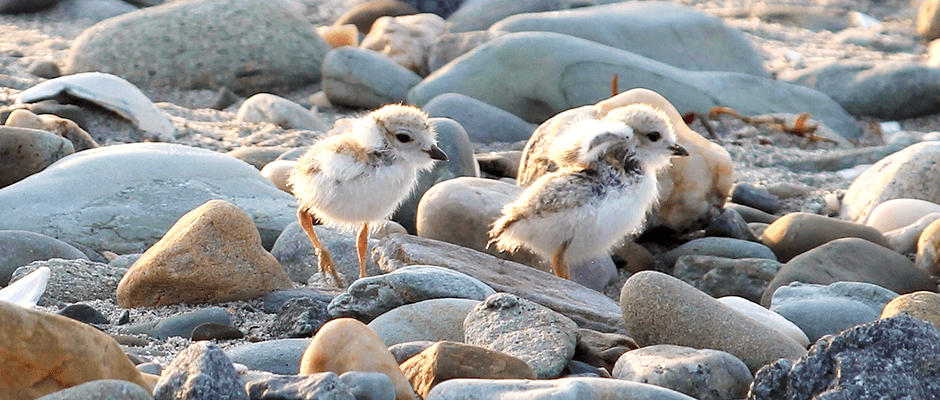Share this article
New Mobile App Helps Plover Conservation
Helping piping plover conservation might now be as easy as buying something on Amazon, according to Rob Theiler, a research geologist with the U.S. Geological Survey.
A mobile application made available only to scientists and conservationists is now being used as a way to collect data on the federally threatened bird. “It’s as simple as click, click, save,” he said.
In 2012, Thieler attended a plover biologist and conservationist meeting with colleagues. He had been thinking about how he could study the impacts of rising sea levels and storm surges due to climate change on piping plovers. After he heard how some of the other biologists were collecting data using high-tech GPS and old-fashioned field notebooks, Thieler thought, “This is going to be tough.”
But then he realized the answer was sitting right next to him — his smart phone. Smart phones have both good GPS and cameras that would be perfect for collecting data on the birds, he thought. That’s where he got the idea to develop a mobile app called iPlover.
Two years later, Thieler distributed the smart phone app to biologists at national wildlife refuges along the eastern seaboard from North Carolina to Maine as well as to the Nature Conservancy in Virginia.
He also set protocols for users to help protect the birds while they collected data. For example, upon discovering a plover nest, users were asked to walk up to within a few meters of it without disturbing the birds. They then start the iPlover app, which also turns on the GPS. At this point, the app prompts users to take a photo within about five meters of the nest and complete a series of assessments relating to where the nest was found, how close it is to a beach, dune or other area, and the type of vegetation in the area. When connected to Wi-Fi, the user can then hit a button in the app that beams the data to a database.
So far, the iPlover app has done a good job of collecting accurate data. “We got good data, and that was hurdle number one,” Thieler said.
Recently, postdoctoral researcher Sara Zeigler has started using the data to look at patterns of habitat utilization, Thieler said. It’s all part of his research to predict the impact of long-term climate change on the birds’ habitat.
“This [research] can help us understand the landscape management strategies we need and what’s adequate to support this number of plovers to meet recovery goals,” he said. As for short-term goals, Thieler hopes to study the birds’ response to storms. “Conservation is our primary goal,” he said.
The app can also help other species that utilize the same habitat as piping plovers, Thieler said. He’s looking into using the plovers as a surrogate species for others such as the northeastern beach tiger beetle (Cicindela dorsalis), which is federally threatened.
“Our hope is that an understanding of plover habitat can show data on other species so we don’t need to collect that data,” he said.
Header Image:
Piping plover chicks in Second Beach in Middletown, R.I.
©Victoria Lima/USFWS, licensed by cc 2.0








